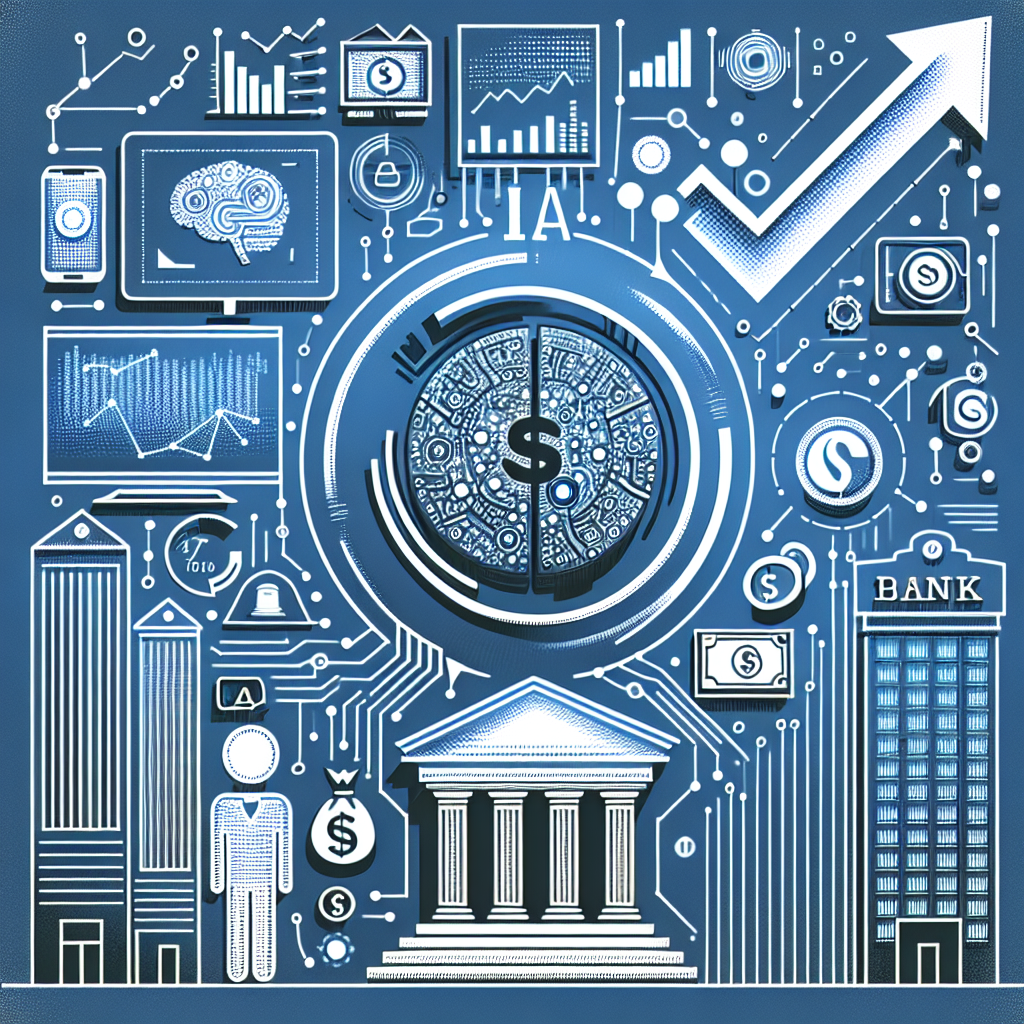In the fast-paced world of commercial banking, staying ahead of market trends and making informed decisions is crucial for success. With the emergence of artificial intelligence (AI) and predictive analytics, banks now have powerful tools at their disposal to anticipate market trends and make data-driven decisions.
AI in Commercial Banking
AI has revolutionized the way commercial banks operate by enabling them to process vast amounts of data at unprecedented speeds. This allows banks to analyze customer behavior, market trends, and risk factors in real-time, giving them a competitive edge in the market.
One of the key applications of AI in commercial banking is predictive analytics. Predictive analytics uses historical data, statistical algorithms, and machine learning techniques to identify patterns and predict future outcomes. By analyzing customer data, market trends, and other factors, banks can anticipate changes in the market and make informed decisions to mitigate risks and capitalize on opportunities.
Predictive Analytics in Commercial Banking
Predictive analytics plays a crucial role in commercial banking by helping banks anticipate market trends, identify potential risks, and optimize their operations. Here are some key ways in which predictive analytics is being used in commercial banking:
1. Credit Risk Assessment: Predictive analytics is used to assess the credit risk of potential borrowers by analyzing their financial history, credit scores, and other relevant factors. By predicting the likelihood of default, banks can make more informed lending decisions and minimize their exposure to risk.
2. Customer Segmentation: Predictive analytics is used to segment customers based on their behavior, preferences, and financial needs. By identifying different customer segments, banks can tailor their products and services to meet the specific needs of each segment, leading to increased customer satisfaction and loyalty.
3. Fraud Detection: Predictive analytics is used to detect fraudulent activities by analyzing transaction data, customer behavior, and other relevant factors. By identifying suspicious patterns and anomalies, banks can prevent fraud and protect their customers from financial losses.
4. Cross-Selling and Upselling: Predictive analytics is used to identify opportunities for cross-selling and upselling by analyzing customer data and predicting their future needs. By offering personalized recommendations and targeted marketing campaigns, banks can increase their revenue and enhance customer satisfaction.
Anticipating Market Trends
By harnessing the power of AI and predictive analytics, commercial banks can anticipate market trends and make informed decisions to stay ahead of the competition. Here are some key ways in which banks can anticipate market trends using AI and predictive analytics:
1. Real-time Data Analysis: AI enables banks to analyze vast amounts of real-time data from various sources, including social media, news articles, and financial reports. By analyzing this data, banks can identify emerging trends, market shifts, and consumer preferences, allowing them to adjust their strategies accordingly.
2. Sentiment Analysis: AI-powered sentiment analysis tools can analyze customer feedback, social media posts, and other sources of data to gauge public sentiment and predict market trends. By monitoring sentiment trends, banks can anticipate changes in consumer behavior and adjust their offerings to meet evolving customer needs.
3. Risk Assessment: Predictive analytics can help banks assess potential risks and vulnerabilities in the market by analyzing historical data, market trends, and other factors. By identifying potential risks early on, banks can take proactive measures to mitigate them and protect their assets.
4. Competitive Intelligence: AI-powered tools can analyze competitors’ strategies, market positioning, and customer feedback to provide banks with valuable insights into the competitive landscape. By monitoring competitors’ activities, banks can anticipate market trends and adjust their strategies to maintain a competitive edge.
FAQs
Q: How can predictive analytics help commercial banks improve customer satisfaction?
A: Predictive analytics can help commercial banks improve customer satisfaction by analyzing customer data and predicting their needs and preferences. By offering personalized recommendations, targeted marketing campaigns, and tailored products and services, banks can enhance customer satisfaction and loyalty.
Q: How can commercial banks leverage AI to detect fraudulent activities?
A: Commercial banks can leverage AI to detect fraudulent activities by analyzing transaction data, customer behavior, and other relevant factors. AI-powered fraud detection tools can identify suspicious patterns and anomalies in real-time, allowing banks to prevent fraud and protect their customers from financial losses.
Q: What are the key benefits of using predictive analytics in commercial banking?
A: The key benefits of using predictive analytics in commercial banking include improved risk assessment, enhanced customer segmentation, increased revenue through cross-selling and upselling, and better decision-making based on data-driven insights.
In conclusion, AI and predictive analytics have transformed the way commercial banks operate by enabling them to anticipate market trends, identify risks, and optimize their operations. By harnessing the power of AI, banks can make informed decisions, improve customer satisfaction, and stay ahead of the competition in today’s fast-paced market.

